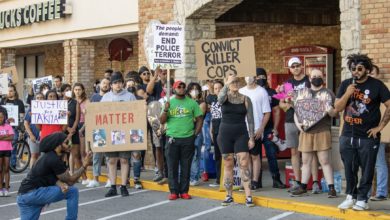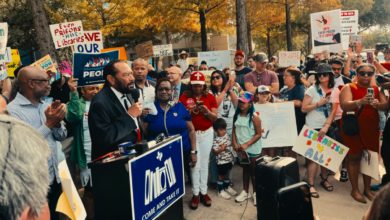Another front of the Occupy movement in the Bay Area appears to be
taking shape. In less than 48 hours, over a thousand students have
attempted to occupy University of California, Berkeley. The police have attacked the students and staff and continue to threaten Occupy
Oakland.
On the morning of Nov. 9, around a thousand people, primarily
students and faculty at UCB, gathered in front of Sproul Hall to
protest cuts to California’s education budget. This year alone has
seen $650 million in cuts to both the UC and California State
University systems. Further cuts are being threatened. As a result of
these and other cuts since the beginning of the economic crisis,
tuition at Berkeley and throughout the UC system has risen seven
times in the past five years, while faculty has been laid off and
classes canceled.
The UCB occupation had been planned for days; university
administrators were aware of these plans. On Nov. 7, Chancellor
Robert Birgeneau sent an intimidating e-mail to all students and
faculty warning them that the setting up of encampments would “not
be tolerated.”
The occupation began with speeches by students and faculty on the
connection between the budget cuts and the insatiable greed of the 1
percent of capitalists and bankers. Leigh Raiford, associate
professor of African-American Studies, noted, “Much of this student
loan debt is held by the four big banks.” A short march around the
campus followed.
When the occupiers returned to Sproul Plaza and began setting up
tents, a large gang of campus police in full riot gear approached the
students. The cops began tearing down tents and destroying the
property of the protesters. The occupiers started chanting, “The
whole world is watching!”
The police then ordered the crowd to disperse. When the protesters
refused, the cops attacked with batons, beating many screaming young
people mercilessly. Cops dragged some students by the hair out of
Sproul Plaza. The crowd started chanting: “Stop beating students!
Stop beating students!”
The occupation was derailed for a few hours, but the General
Assembly of Occupy UCB convened at 6 p.m. as planned. The vice
chancellor of UCB, Harry Le Grande, addressed the crowd, formally
making a “proposition” to be voted on by the assembly. The
university administration would “allow” a 24-hour-a-day
occupation for one week, on the conditions that amplified sound only
be used from 12 to 1 p.m. and 5 to 7 p.m., no tents or sleeping bags
be set up, and no cooking areas be established. In other words, UCB
would “tolerate” one week of “occupation,” as long as no
actual occupation took place!
If any of UCB’s conditions were violated, Le Grande added, cops
would disperse the protesters after a 10-minute warning.
Occupiers began screaming at Le Grande, noting that his
“proposition” was actually a threat. The proposition was voted
on, however: four were for it, 350 against. The occupation of UC
Berkeley would continue without compromising with bureaucrats like
Birgenea, Le Grande and their cop enforcers. Protesters, including
Party for Socialism and Liberation member and UCB lecturer Sarah
Ismail, then broke up into committees to organize the encampment.
Word spread throughout the UCB community to bring tents and
camping supplies to Sproul Plaza to support the occupation. A tent
city quickly took shape.
The UCB campus police set a curfew for midnight, but it was
ignored. The cops arrested 39 people. Hundreds of students met the following night to outline plans for re-establishing the camp.
Meanwhile in Oakland
A few miles away in downtown Oakland, police used a killing that
took place in the general vicinity to paint a portrait of Occupy
Oakland as a violent phenomenon.
The night-lights around Oscar Grant Park, the site of Occupy
Oakland, had mysteriously stopped working. It is widely believed
among the occupiers that the city deliberately turned off the lights
to make the campsite less inviting.
In the evening of Nov. 10, occupiers saw a group of men beating
another man to the ground. When several protesters ran over to
protect this individual, one of the assailants reportedly pulled a
gun and shot the man on the ground. The victim’s first medical care
came from the medics of the Occupy Oakland encampment.
Nonetheless, City Councilman Ignacio De La Fuente was quoted as
saying that the Occupation was “escalating and this was going to
happen.”
Mayor Jean Quan, one of the architects of an earlier, violent
police raid against the camp, said: “The risks are too great for
having an encampment out there. It’s time for the encampment to end.”
The people of Oakland clearly disagreed. Within hours of the
shooting, a group of people joined the Occupation. These visitors,
which included a large contingent of veterans, encircled the
encampment and stood guard over it.
Sarah Ismail contributed to this report.






